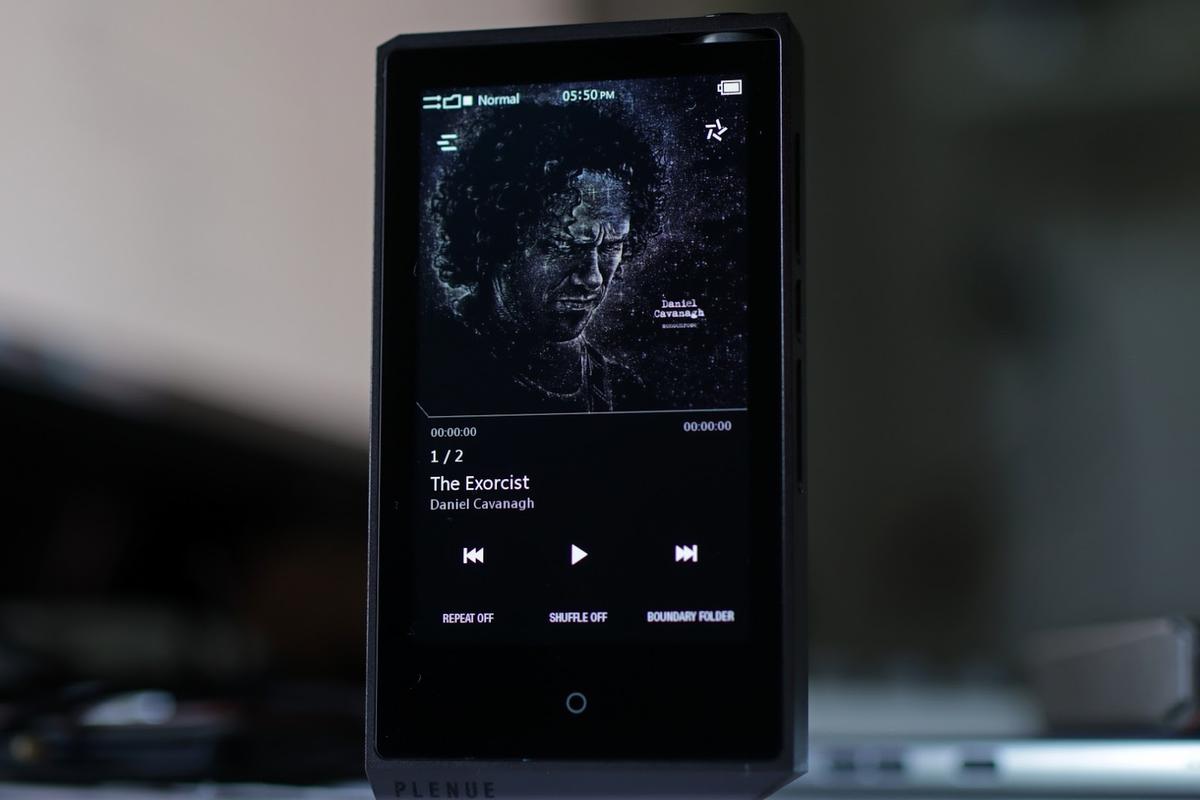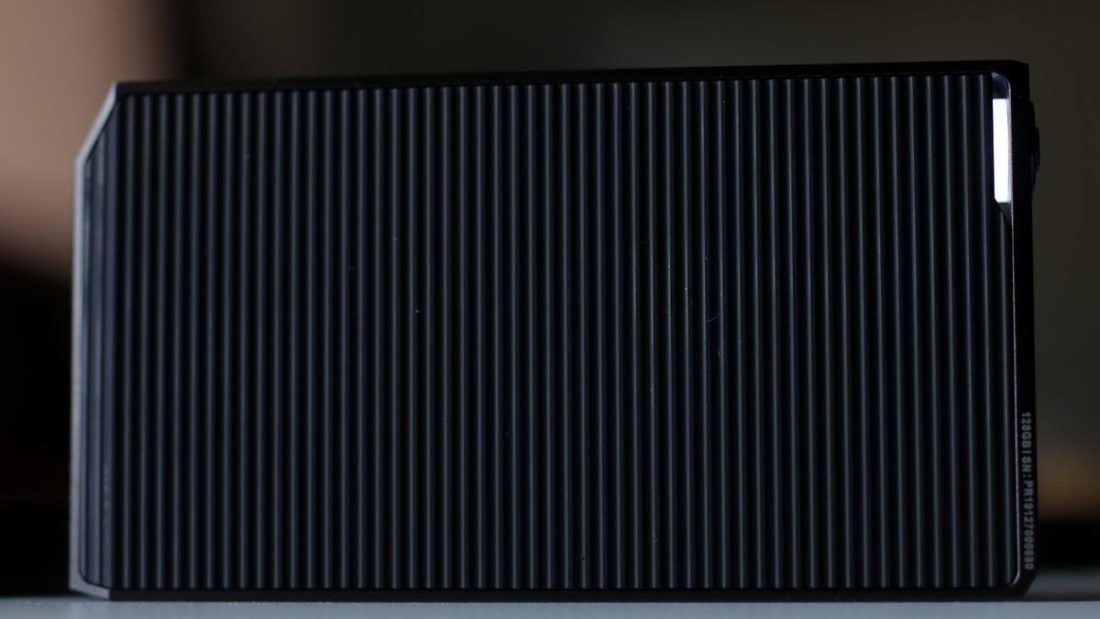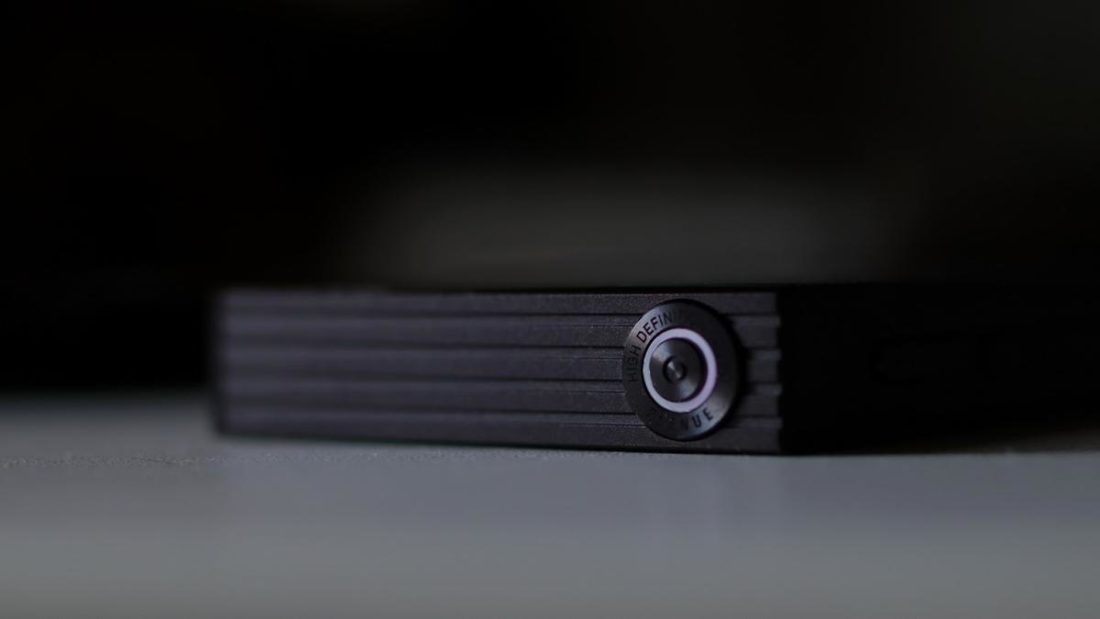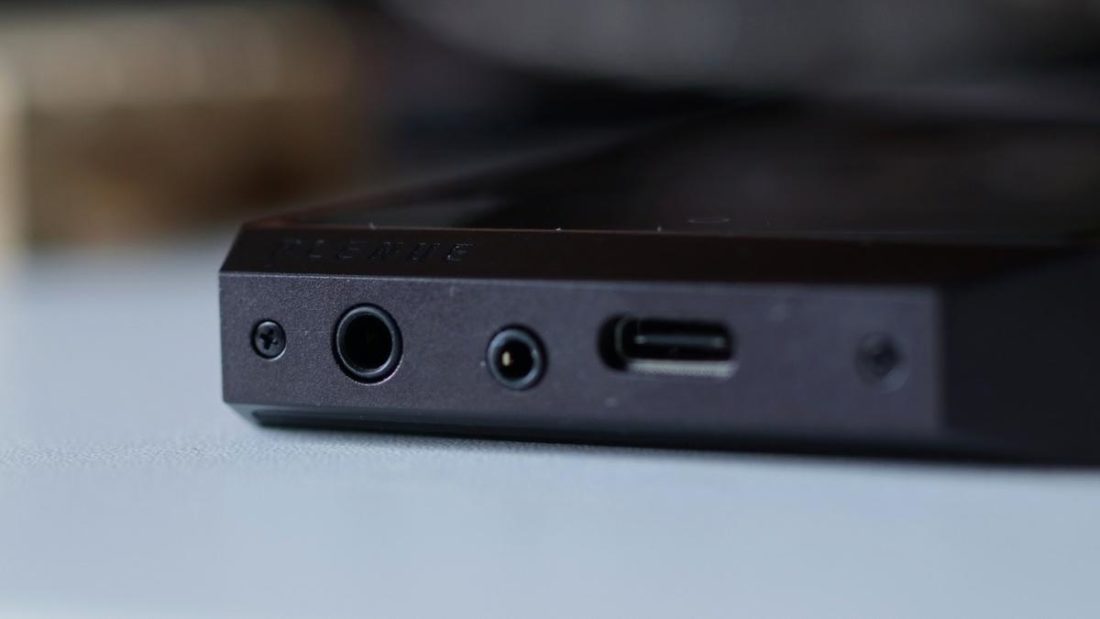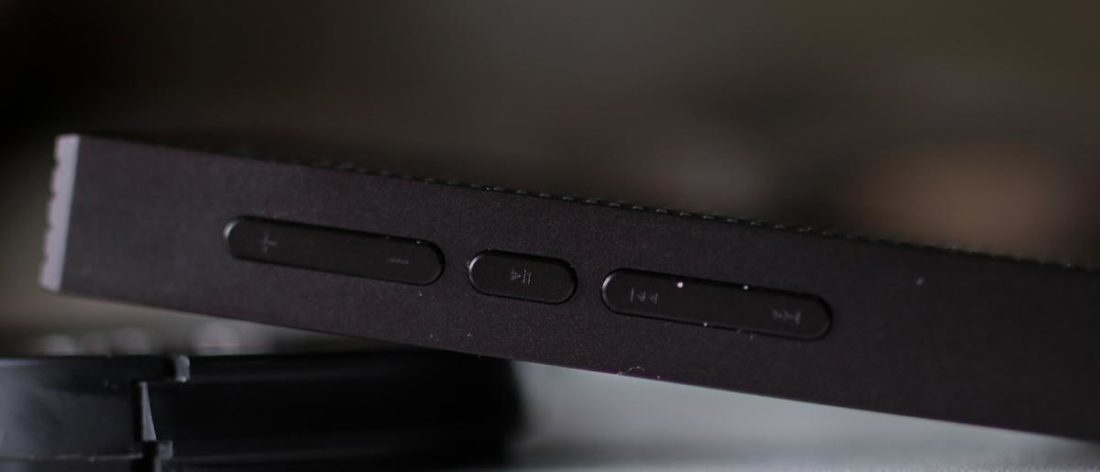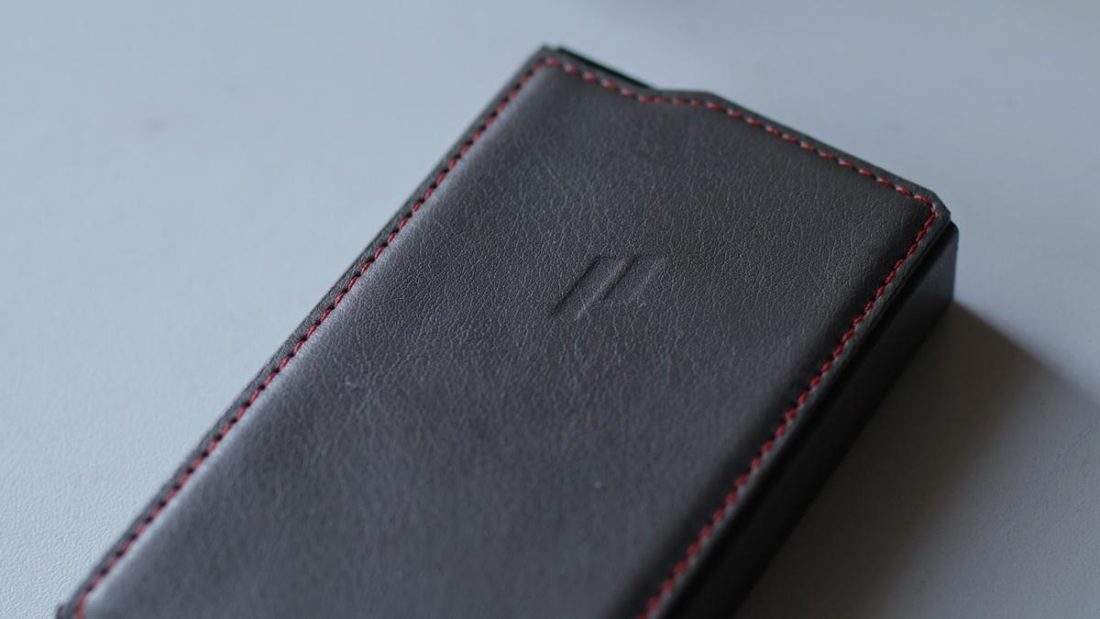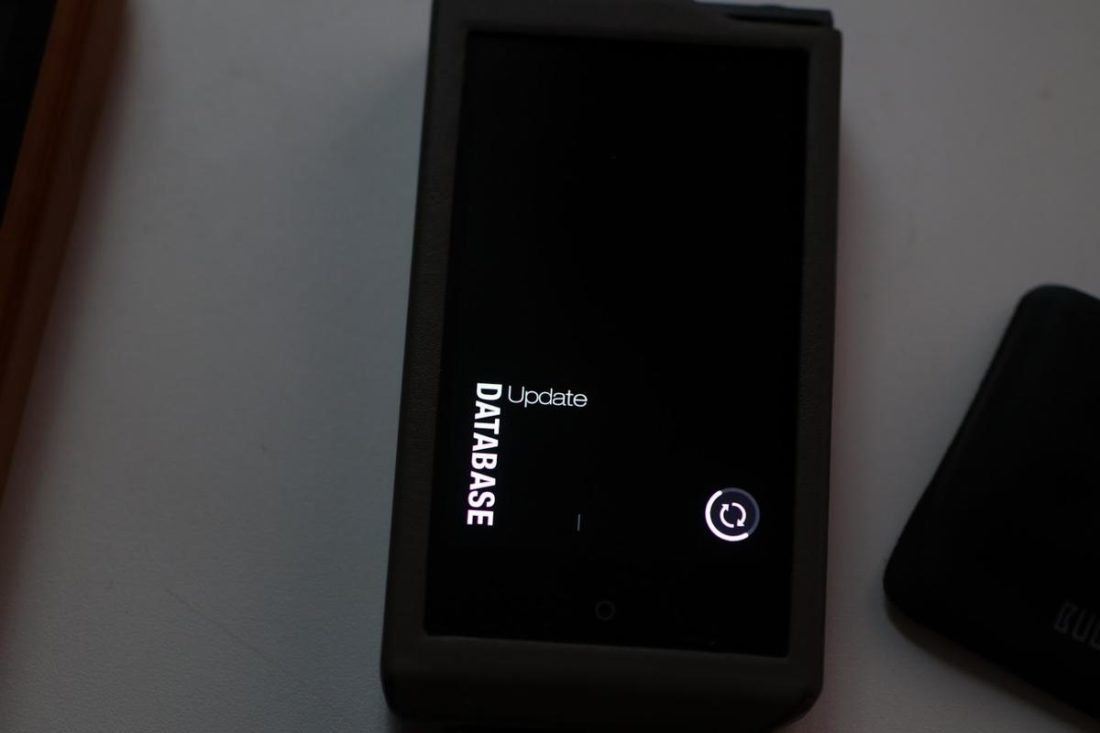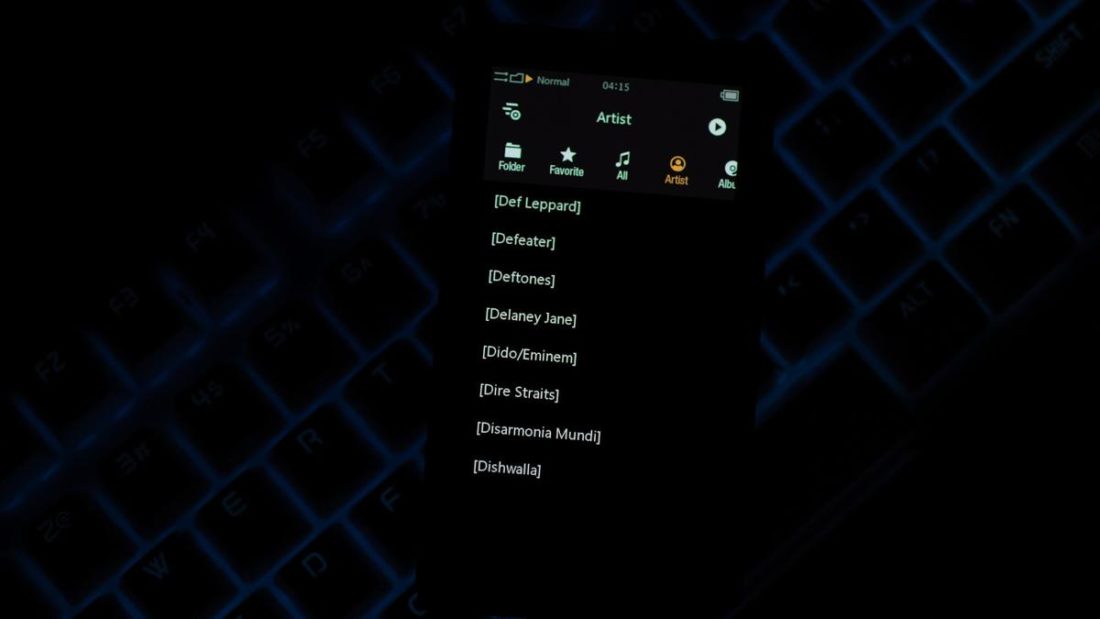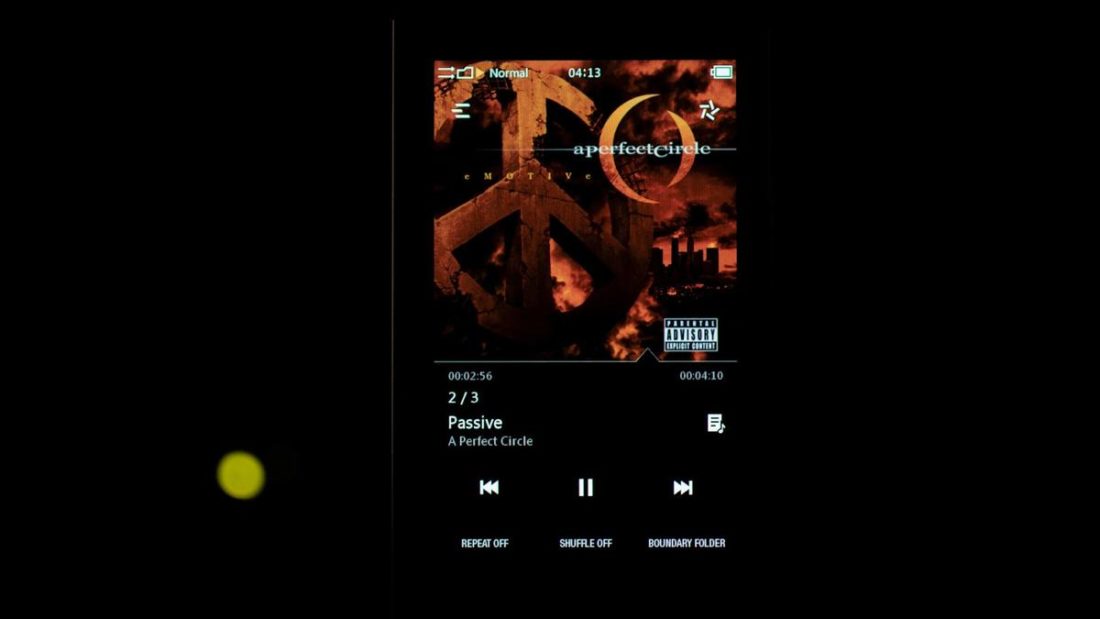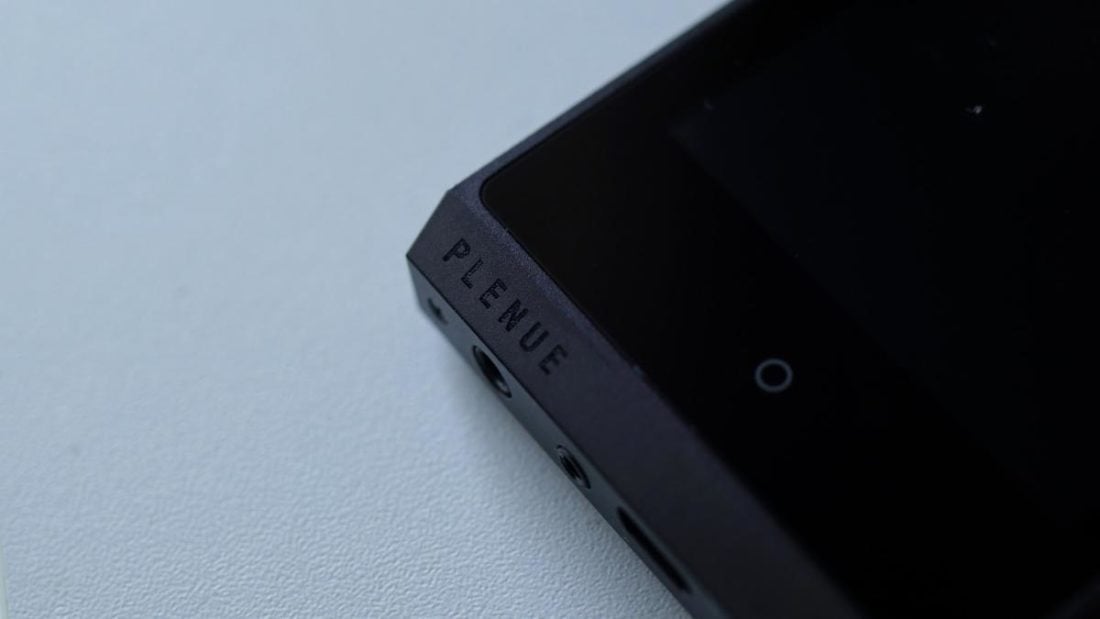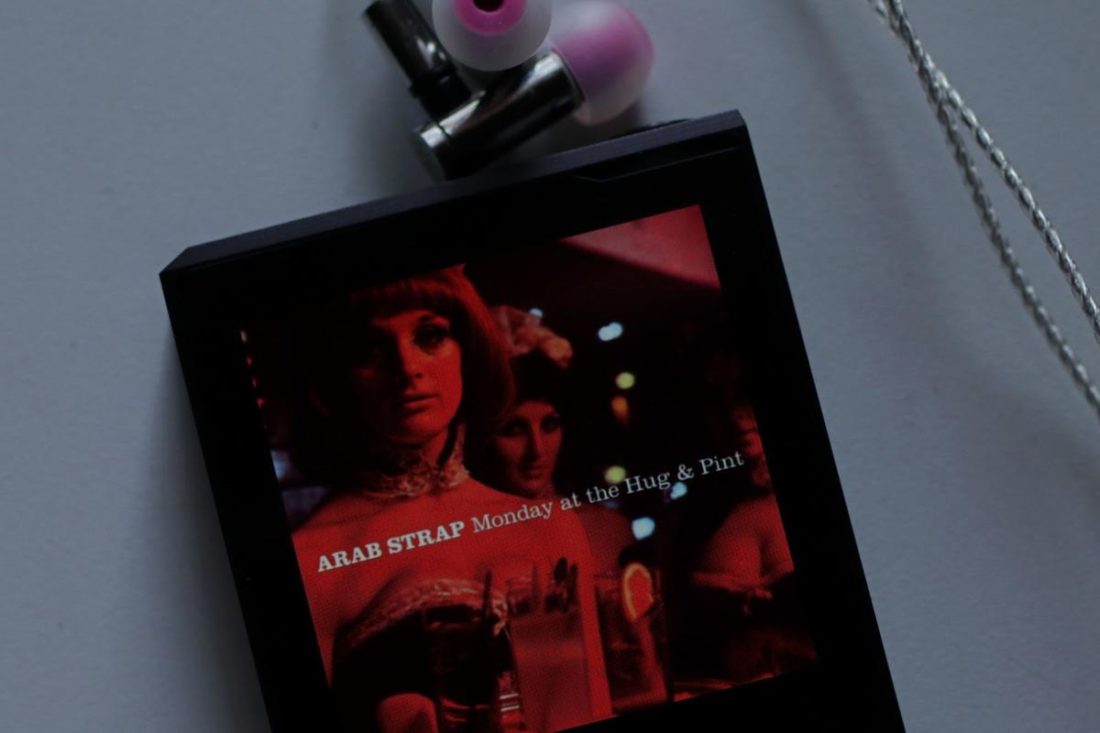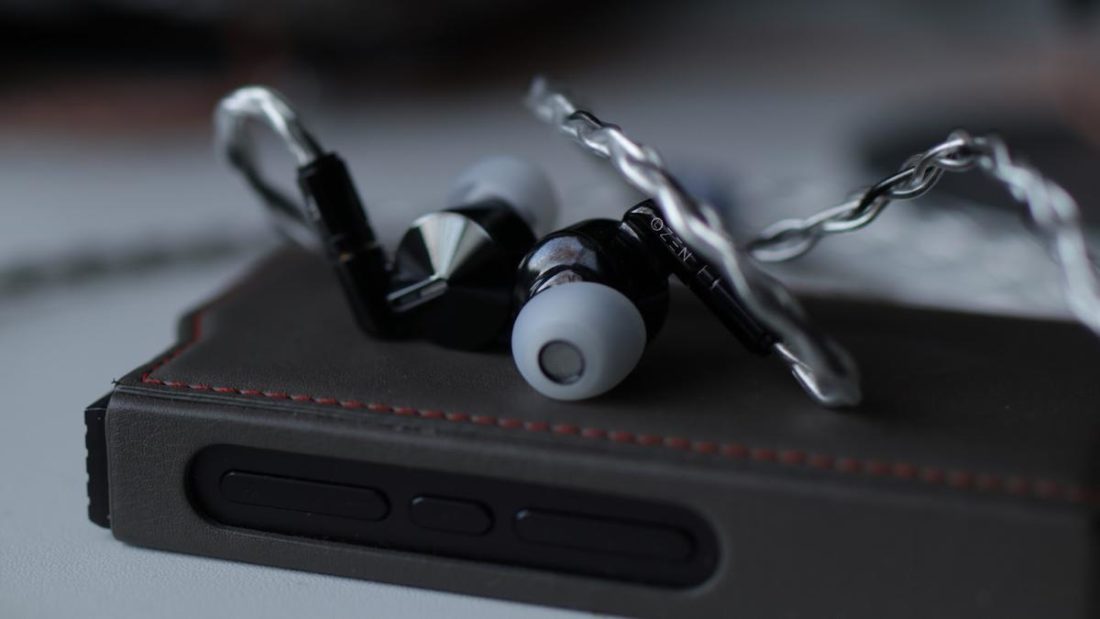Ah, Cowon, never change! While most manufacturers are trying to provide all the bells and whistles, Cowon is keeping things simple and basic. The Korean company focuses on a pure listening experience: put in an SD card, load some music, and go about your business. The Cowon Plenue R2 is a good showcase for Cowon’s minimalist philosophy. It’s priced in the mid-range of the DAP market and, unlike its peers, lacks Android OS, a large touch-screen, and online streaming support. However, the Plenue R2 sports a fascinating dual-mono configuration of the Cirrus Logic CS43131 chipset which boasts desktop-class measurements in many aspects. Let’s see if the software limitations are overshadowed by the playback quality.
Technical Specifications
Form: Digital Audio Player (DAP) DAC Chip: Cirrus Logic CS43131 x2 (dual-mono configuration) and Delta-Sigma encoding CPU: ARM Cortex A9 1.2GHz dual-core Master Clock: High precision TCXO (phase jitter 1.0 picosecond) CPLD: Proprietary DSP Engine: JetEffect 7 Operating System: Lightweight Linux-based OS Screen: Samsung 3.7″ (480×800) AMOLED Capacitive Touchscreen Memory: 128 GB internal, up to 512GB microSD card Codec support: PCM – 32bit/384KHz, DSD – DSD256 Gain Settings: Headphone Mode/Earphone Mode Reconstruction Filters: 5 Bluetooth Version: 3.0 Bluetooth Audio Codec: Apt-X, SBC Outputs: 3.5mm single-ended, 2.5mm balance, USB-C Total Harmonic Distortion+Noise: 0.0005% (1kHz) Crosstalk: -148dB Voltage Swing: 2.0Vrms (single-ended), 4.0Vrms (balanced) Signal-to-Noise Ratio: 136dB Output Impedance: 0.6 ohm (single-ended), 1.2 ohm (balanced) Controls: Top power knob with RGB LED, playback control buttons – play/pause, previous track, next track Battery: 3000mAh 3.7V Li-Polymer Battery Battery Life (hours): 18.5 Charging Time: ~3 hours Body material: aluminum, rubber Color: Black Dimensions: 61.5×112.99×13.9mm Weight: 154g
Packaging
Cowon opted for their signature stealth-black packaging. The unboxing is no-frills, but there is ample foam padding inside to protect the DAP while transporting.
Accessories
Not much in the way of accessories here as Cowon only bundles a 1.5m USB type-A to type-C cable (which you likely have already). A disappointment indeed.
Design
Cowon went for a bold design language with straight edges and sharp corners for the Plenue R2. This results in an industrial design that Cowon termed “Solid and Void”. The backplate has an interesting rubber pattern that helps in gripping the device. The top of the device houses the power button with a circular LED underneath that changes color according to the bit-depth/type of the file being played. For DSD files it glows yellow, purple for FLAC files, and white for regular lossy files. This LED also acts as a status LED when the device is on standby. I turned it off myself as it was distracting during late-night sessions. The right side of the device houses the playback control buttons which have nice feedback. The left side of the housing has the microSD slot. The bottom of the device has all the ports: 3.5mm SE, 2.5mm balanced, and USB type-C. I like the placement of ports at the bottom so the headphone cables don’t run across the device and aren’t a nuisance. Finally, the front of the device only has a capacitive touch button at the bottom.
Display
The Cowon Plenue R2 utilizes a 800*480 Samsung AMOLED panel. AMOLED panels are quite a rarity in the DAP market and it’s great that Cowon is utilizing one here. The display offers deep blacks, near-infinite contrast ratio, and punchy colors. Viewing angles are superb. In terms of color accuracy, there is a warm tint to the display. While not ideal, this is a DAP so color accuracy isn’t the biggest concern. Display brightness is good and you can navigate it easily even under direct sunlight. The display is covered by scratch-resistant glass but don’t expect smartphone levels of durability. Text looks somewhat blurred out up close due to the pentile display matrix. Overall, an excellent display that will do justice to album cover art.
Usability
When it comes to handling, the Plenue R2 is a bit of a mixed bag. While it is compact, and for the most part, one-handed operation is a breeze, the top power-button can be a stretch. You can use the playback buttons just by feel without looking. Cowon did a good job with the overall usability. The sharp edges are a design cue and look good but the corners dig into your palm when holding the DAP. It’s not painful but it is distracting. The solution is fairly simple: get the official leather case and the edges are gone.
User interface
The Plenue R2 runs on Cowon’s proprietary Linux-based Operating System that is very lightweight in nature (limited number of background processes, frugal power-draw, deep-sleep mode during standby, etc.). Being a proprietary OS, Cowon knows the ins and outs of the system and can customize at the kernel level. As a result, boot times are excellent, with the device taking only about 10 seconds to start from cold. However, being unique from the rest also has its downsides. Cowon’s OS lacks support for all modern streaming services and MQA unfolding. It’s also not very fast feeling with the UI capped at 30fps, resulting in choppy scrolling and slow transitions when moving from one page to another. Now that we’ve got the limitations out of the way, let’s talk about what the OS does extremely well. First of all, it’s very stable. I have only had one random crash in over a year of usage. Secondly, it draws very little power when on standby since there is no multitasking or support for multiple background processes (unlike Android-based DAPs). Last but not least, the features it has are focused mostly on music playback and that makes the experience of using the DAP quite pleasant. User friendly subtleties are sprinkled throughout the whole user experience that you will miss if you move to a more “modern” DAP. For example, the way the rewind button works: it plays a small part of the track as the song rewinds, allowing you to pick the exact spot you want to repeat. There are numerous player skins that change the look of the Now Playing screen. The player background can be changed too (I chose black for power efficiency). Then there are 140 levels of volume adjustment with precise 0.5dB of change between each level. Neat! Very few devices do gapless playback as well as the Plenue R2. You can smoothly transition from one song to the next even while rewinding. The DAC feature is superb and by just selecting “DAC” from the settings menu allows you to connect to Windows/Linux machines without extra driver installation. You can assign the capacitive button to a number of features including reconstruction filter selection, which is handy. Another nice addition is the ability to access nearly all the features from the Now Playing screen. Tapping on the icon on the top-right shows a row of shortcuts and you can basically change/tweak everything from there. You can use swipe gestures in most of the UI – swipe from left to go back a level, swipe from bottom in Now Playing screen to access song list, etc. The DSP effects (JetEffect 7) are also class-leading and sound better than similar solutions like Hiby’s MSEB. Whereas MSEB mostly works in the frequency domain, JetEffect manipulates both the frequency and time domain to offer unique and realistic DSP effects. I recommend trying them out to see what works for a particular headphone/earphone pairing. All in all, the Plenue R2 has a dizzying array of features when it comes to music playback. There is a pretty decent Parametric EQ (PEQ) option that allows you to choose from some pre-selected frequencies. The DSP effects can be customized to your heart’s content (up to 40 custom presets available too) and can be mixed with regular PEQ. Add to that the five selectable filters and the Plenue R2 becomes a chameleon of a device. I am willing to forego many smartphone-based features for such flexibility, but I understand some might focus more on the streaming services or lack thereof.
Battery life
Battery endurance is one of the Plenue R2’s biggest strengths. The power draw is very minimal when the device is not in use, and the auto-off feature helps with standby times as well. The AMOLED display is also frugal (even more so if you pick a black background). Add that to the power-efficient CS43131 chipset and you get impressive battery life. I usually have to charge it once a week since a single charge gives me ~17 hours of playback time. That’s something none of the Android DAPs can boast, so the Plenue R2 is a clear winner in the battery life category. Charging times could be faster though. The device charges at an anemic 1.5V resulting in very slow power-refill (~3 hours for 100%). A higher voltage charging solution would be beneficial (even though it may deteriorate the battery in the long-term).
Internals
Cowon uses two Cirrus Logic CS43131 chipsets in a dual-mono configuration. This helps in reducing stereo crosstalk and increases SNR since the noise mostly cancels itself out in the output stage. This particular chip is available in some budget DAPs but what matters the most is the implementation, which Cowon aced with the Plenue R2. Firstly, the Plenue R2 uses a Temperature Compensated Oscillator (TCXO) to control sampling rate fluctuations due to changes in operating temperature. Secondly, it employs a Complex Programmable Logic Device (CPLD) to execute fixed operations very fast and also to reduce noise in the process. Simply max out the volume to enter line-out mode. Nifty. Other features include a very old Bluetooth (BT) 3.0 implementation but it does support DSP effects over BT which is quite uncommon. Speaking of old things, Cowon uses an archaic Cortex A9 1.2GHz CPU without any HW acceleration. This is the one area where I hope Cowon improves soon because a more modern CPU and some form of GPU will not only help with power efficiency but also help make the UI navigation more fluid.
Cowon Plenue R2 Sound
It is very difficult to describe how the Plenue R2 sounds because with the JetEffect enabled it can sound like anything. Moreover, the choice of reconstruction filter subtly alters the sound. This is a good thing as it makes “pairing” with bright or warm IEMs a simple procedure (just change the filters). On the other hand it becomes very difficult to describe a “base” sound. Nonetheless, for testing, I chose to keep all DSP effects turned off and I selected the fast/low-latency filter. I also used the Dunu Zen earphones which are quite sensitive to source changes. The signature is also somewhat laid-back with the treble notes not being as aggressively focused as many of its peers. This does not come across as a lack of resolution, however, just that things aren’t “in-your-face”. The treble has a distinct lack of edginess that many of the DAPs in this price range suffer from. This results in a smooth treble rendition that is non-fatiguing on the source side. The bass reproduction on the Plenue R2 is interesting as it mostly focuses on the mid-bass fullness rather than sub-bass hit. However, a subtle bump in the JetEffect setting can remedy that (try ‘Mach3Bass’). What stands out the most, though, is the microdynamics of the Plenue R2. Subtle gradations in volume levels are so vividly portrayed that it makes most other DAPs sound lifeless in comparison. Macrodynamics (sudden change in loudness) are also very good. Staging is excellent with no noticeable deficiency, and imaging is precise. Layering is one area where it falls short of flagship DAPs, and the other one is raw output power. Despite having a 4Vrms voltage swing from the balanced out (thus making some high-impedance loads run decently) the Plenue R2 won’t get very loud with inefficient gear.
Pairing Notes
I tried to run a Hifiman Sundara off of it and that didn’t go well. The same applies to the Sennheiser HD650 which did not have the expected fullness in the bass and lower-mids. The Sennheiser HD560S, Meze 99 Classics, and Final Sonorous III were very easy to drive, however. Strangely enough, one of the most pesky IEMs in terms of power, the Final E5000 (92 dB/mW @ 14 ohms) ran excellently from the balanced output of the Plenue R2. More powerful DAPs failed to exert the bass-control that Plenue R2 had with E5000. The best pairings I had with the Plenue R2 were with moderately efficient single-dynamic driver IEMs and highly sensitive multi-BA IEMs. IEMs like the Dunu Zen, Final E3000, Sennheiser IE900, Final A8000, and Dunu Luna paired incredibly well. As for BA and hybrid IEMs, the Dunu Studio SA6 and the ever-so-picky Campfire Audio Andromeda 2020 were driven to their full potential without any background hiss. This is another area where the Plenue R2 excels: zero background noise no matter how sensitive the earphones may be. The only moderately sensitive IEM that did not pair well with the Plenue R2 was the Sony IER-Z1R, but it was the sole exception.
Comparisons
Vs Hiby R6 2020
The Hiby R6 2020 is a refresh of the Hiby R6 Pro and as a DAP is the polar-opposite of the Plenue R2 in many ways. Hiby embraces the Android OS and tries to make the experience as smartphone-like as possible. Cowon meanwhile trims the OS to its essentials and focuses on music playback first and foremost. In terms of general UI smoothness and snappiness, the Hiby R6 2020 is in an entirely different dimension. Not even a hint of a contest. If you want Android OS and loads of connectivity options, the R6 2020 is one of the best out there. The Plenue R2 can but haplessly languish against the sheer computational grunt of the Hiby DAP. Then we get to the sound quality. There is not a single aspect of the sound where the R6 2020 can match, let alone surpass the Cowon DAP. Dynamics are superior on the Cowon, the transparency in the mids richer, and even subtle spatial cues are well portrayed which often gets too up-front in the R6 2020. The atmospheric nuances are also better portrayed on the Plenue R2 (playing in a small room vs in an open-air concert), something the Hiby lacks since it plays everything at about the same volume. As for the rest of the stuff, the Plenue R2 is easier to handle in one-hand and has far better battery life. R6 2020 has a larger, sharper screen even though contrast and color is better on the Plenue R2. I think the conclusion here is pretty straightforward: if you don’t need streaming services, the Plenue R2 is a no-brainer better choice.
Vs Astell&Kern SR25
This time the competition comes from Cowon’s home-turf. Astell&Kern is one of the most popular DAP manufacturers around and the Koreans have some of the most striking industrial designs out there. The Astell&Kern SR25 is uniquely identifiable with its slanted display which is divisive but definitely grabs attention. SR25 uses Android but it’s a deeply customized version of the OS. As a result of using a fork of Android, the SR25 can stream from Tidal, Spotify, and Qobuz. However, A&K did a poor job of optimizing the OS so you’ll face random freezes, stutters, and a general sluggishness while operating. Also, you cannot install unsupported apps (no Play Store support) which is a bummer. Even with these limitations the SR25 is a “smarter” DAP than the Plenue R2. Let’s get into the sound quality then. In terms of amplification, the SR25 beats the Plenue R2, though it’s not as big a gap as it was with the Hiby R6 2020. In terms of sound quality, the SR25 has a colored presentation that works well with some pairings and genres and not so well with others. For those looking for a reference player, the coloration on the SR25 may be too much. Staging is also a bit odd on the SR25 as it is very tall and wide but lacks the depth that the Plenue R2 can portray. Imaging suffers as a result, and so does separation. Macrodynamics are better defined on the SR25 whereas the Plenue R2 offers far superior microdynamics. Battery life is nearly twice as long on the Plenue R2. It also has superior DSP effects and the display quality is better (the SR25 display looks washed out). Once again, for sound quality alone I would pick the Plenue R2. However, the SR25 does sound more exciting with Pop and EDM tracks and when paired with bass-lite IEMs, so some might prefer that coloration over the neutrality of Plenue R2.
Where to Buy
Conclusion
The Plenue R2 caters to a niche, and if you are part of that particular audience it’ll serve you exceedingly well. I like devices that have a singular and well-executed purpose, so I have a soft-spot for the Plenue R2. Moreover, the attention to detail when it comes to the listening experience is unlike anything else out there. If you need streaming services and a faster UI with smartphone-like operation, then the Plenue R2 will disappoint. In fact, everything from Cowon will be an exercise in frustration in that regard. However, if you value sound quality above everything else, need class-leading battery life, and want a DAP that has a dizzying array of sound tuning options, the Cowon Plenue R2 stands alone. Cowon made a flawed masterpiece, but it is a masterpiece nonetheless. The Cowon Plenue R2 earns my recommendation as one of the best DAPs under $1000.
